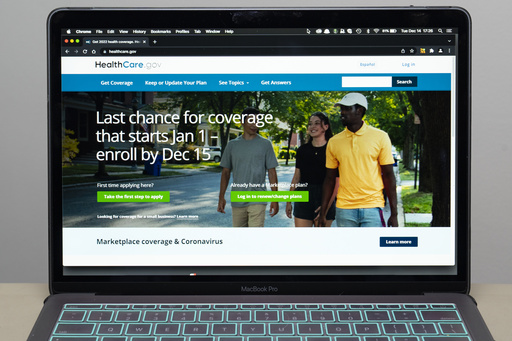
With the arrival of the annual enrollment period for health insurance, many individuals are on the lookout for affordable options. However, it’s essential to look beyond the price tag when selecting a plan. Buyers should take into account aspects such as doctor networks and coverage limitations to prevent unforeseen expenses following medical services.
Millions of Americans are currently exploring coverage options for 2025 as they navigate the enrollment windows for both Medicare Advantage plans and individual insurance policies. Additionally, employers are informing their employees about available coverage options for the upcoming year.
Medicare Advantage providers are advertising plans with no premiums, while marketplaces established by the Affordable Care Act are offering tax credits to aid in covering costs related to premiums and overall insurance expenses.
To make an informed decision, here are several crucial considerations beyond just the pricing of a plan.
**What Should I Know About Deductibles?**
The deductible is the amount that a patient must pay before the insurance starts contributing toward their covered medical services. Plans with lower premiums can have deductibles exceeding $1,000 for individuals and several thousand dollars for families. It’s vital for shoppers to review both the amount of the deductible and its application in relation to their healthcare needs, particularly for those who frequently visit specialists, as costs can accumulate quickly.
It’s important to note that deductibles differ from copayments, the fixed amounts paid for specific services or visits. Copays typically do not count toward meeting the deductible threshold.
**Are My Physicians Included?**
Insurance companies curate networks of in-network doctors and healthcare systems. Some plans may refuse to cover services received outside of these approved networks. The federal government’s website facilitates the search for insurance plans by allowing users to filter options based on covered providers and facilities, according to Emily Bremer, president of The Bremer Group, an independent insurance agency based in St. Louis.
When assessing coverage, consumers should consider not only the presence of their physicians in the network but also the hospital systems they would prefer in case of a significant medical emergency.
**How About Medications?**
Each insurance plan has a formulary, listing covered medications that can differ significantly from one plan to another. These formularies often classify medications into tiers, affecting how much patients pay out of pocket for each prescription.
Consumers should investigate how a selected plan accommodates their current prescriptions. If the cost is prohibitive, alternatives such as manufacturer coupons or discount programs might be available. For instance, GoodRx is a popular option for obtaining drug prices at a reduced rate.
“As a patient with multiple prescriptions or frequent specialist visits, it may be impossible to find a single coverage plan that meets all needs perfectly,” Bremer cautioned. “Sometimes, making compromises is necessary.”
**What is Coinsurance?**
Coinsurance refers to the percentage of medical bills patients must pay after their deductible has been met. This percentage can differ between plans, typically resulting in patients with lower premiums facing higher coinsurance costs. Understanding this payment structure is crucial, as significant bills can lead to substantial out-of-pocket expenses. For example, if a cesarean delivery generates a $25,000 bill and the patient has a $1,000 deductible along with a 20% coinsurance rate, they could end up paying $5,800 in total.
“Many individuals concentrate solely on their deductible and overlook coinsurance, which can potentially become a financial burden,” Bremer remarked. “It can catch you off guard, especially with larger medical procedures.” Individuals with limited income may qualify for assistance with these expenses through cost-sharing reductions in ACA marketplaces.
**What are the Out-of-Pocket Limits?**
Health plans will cover all expenses for covered, in-network services once patients reach their out-of-pocket maximums, which vary by plan. For coverage through ACA marketplaces, the annual limit cannot exceed $9,200 for individuals and $18,400 for families in the upcoming year. Meeting this spending threshold may only offer temporary relief since the costs counting towards this maximum typically reset at the beginning of each calendar year or if a plan switch occurs midyear.
